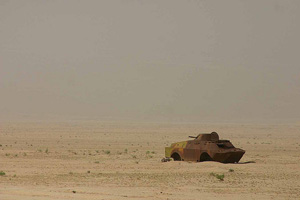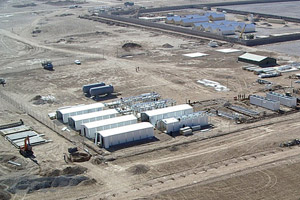As we know from a single April 19, 2003 New York Times piece, the Pentagon arrived in Saddam Hussein’s Iraq preparing for a long stay. They already had at least four mega-military bases on the drawing boards as they entered the country (all subsequently built). “Enduring camps” they decided to call them, rather than the dicier “permanent bases.” In the end, hundreds of bases were constructed in Iraq, from the tiniest combat outposts to monster installations, to the tune of untold billions of dollars. In the end, hundreds are now being left behind to be stripped, looted, or occupied by the Iraqi military.
From Baghdad, the British Guardian’s correspondent Martin Chulov recently reported that part of the price Nouri al-Maliki seems to have negotiated (in Tehran, not Washington) to retain his prime ministership may involve not letting the Pentagon keep even a single monster base in Iraq after 2011. This was evidently demanded by former US nemesis, rebel cleric, and now “kingmaker” Muqtada al-Sadr, whose movement controls more than 10% of the votes in Iraq’s new parliament. That can’t make the Pentagon, or the US high command, happy—and the Obama administration is already kicking.
However this ends for Washington, barely based or baseless in Iraq, surely this was not the way it was supposed to happen, not when it was still “mission accomplished” time and it seemed so self-evident that American military power, obviously unchallengeable, would be deeply entrenched on either side of Iran until “regime change” occurred there.
If you want a measure of how far the US has “fallen” in Iraq, it now has only 21 “burn pits” there—places at US bases where waste of all sorts is incinerated, regularly spewing smoke filled with toxic emissions into the air to the detriment of American soldiers (and undoubtedly local Iraqis as well). On the other hand, according to a Government Accountability Office report, there are now 221 such pits in Afghanistan and “more coming.” Put another way, even as America’s baseworld in Iraq dwindles, there seems to be no learning curve in Washington. As Nick Turse suggests in his most recent TomDispatch report, in Afghanistan we seem to be heading down the Iraq path on bases with a special ardor. More than nine years after our “successful” invasion, billions of US taxpayer dollars are still flowing into constructing and upgrading the massive base structure in that country—and yet, there are never enough of them.
In a recent Wall Street Journal piece on an unexpected surge of Taliban successes in northern Afghanistan, Army Colonel Bill Burleson, commander of the 10th Mountain Division, among the relatively modest US forces in the northern part of that country, is quoted as saying somewhat desperately of Taliban gains in the region: “In order to deny that terrain to the enemy you’d have to have people all over Afghanistan in combat outposts.” Good point, Colonel. Why stop now?










